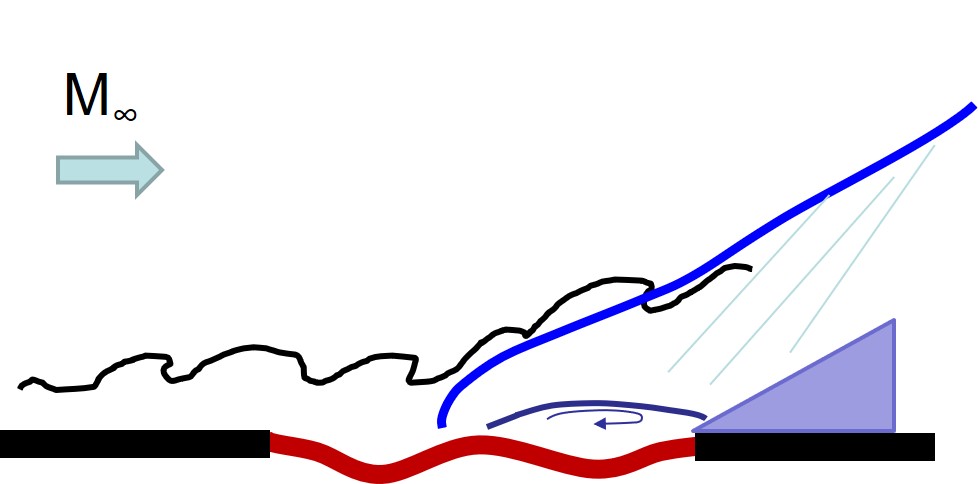Current Projects
-

AFOSR/NASA University Leadership Initiative — Full-Airframe Sensing Technology (FAST) for Hypersonic Aerodynamics Measurements
UT Austin is the lead institution for a AFOSR/NASA University Leadership Initiative program that focuses on developing a new measurement technology for hypersonic flight. This multi-university research and educational project is called FAST: Full-Airframe Sensing Technology for Hypersonic Aerodynamics Measurements. The FAST concept is that aerodynamic loads are “encoded” in the structural deformation of the…
-

Flow-structure interaction: Compliant panel under a compression ramp shock / boundary layer interaction
Flow-structure interaction (FSI) is important in high-speed flight because thin structures, such as the vehicle skin, are subjected to strong vibratory interaction with the flow. This interaction can lead to fatigue and failure of vehicle structures. We are investigating the flow-structure dynamic interaction of a compliant panel exposed to Mach 2 and Mach 5 shock-boundary…
-

Characterization of an inductively-coupled plasma torch for validation of exascale predictive simulations
This project is part of a much larger project that is supported by the DOE Predictive Science Academic Alliance Program (PSAAP). The UT PSAAP effort is led by the PECOS Center, which is part of the Oden Institute. The overall objective of the project is to develop advanced predictive simulations of inductively-coupled plasma torches that…
-

Ablation of high-temperature materials
A wide range of high-temperature materials are being studied using our 50 kW ICP Torch. The materials being tested have potential application in the thermal protection systems for hypersonic vehicles that are being developed by the U.S. Army. The materials being tested include various polymer matrix composites as well as newly-developed 3D-printed materials. Under this…
-
Boundary Layer Flashback in Swirl Flames
Flame flashback is the uncontrolled upstream propagation of a premixed flame, and can lead to thermal damage of components in gas-turbine combustors. We are studying the type of flashback where the flame propagates within the wall boundary layer of a swirling flow. This work is relevant to gas-turbine combustors that operate with high-hydrogen-content syngas fuels…
-
Flashback in High-Pressure Swirl Flames
The effect of pressure is being studied on the flashback dynamics of turbulent swirl flames. This work is relevant to gas-turbine combustors that will operate with high-hydrogen-content syngas fuels derived from coal gasification. Sponsored by DOE UTSR.
-
Physics and Control of Unstart in Supersonic Inlet-Isolator Configurations
This study seeks to gain understanding of the physics of supersonic inlet unstart using high speed schlieren, PIV and fast response pressure measurements. ; A simplified inlet/isolator model with plexiglass sidewalls is used. ; With further understanding of unstart, passive and active control methods involving vortex generators and vortex generator jets can be investigated.
-
Investigation of unsteadiness of shock-induced separated flows
In this project we are investigating the low frequency unsteadiness that characterizes the interaction of a shock wave with a turbulent boundary layer. This work has implications for the fatigue of structures and effectiveness of control surfaces on high speed aircraft and missiles. Our approach is to combine fast response pressure measurements with advanced optical…
